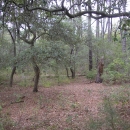About Us
Pea Island National Wildlife Refuge was established in 1938 to provide nesting, resting, and wintering habitat for migratory birds, including the greater snow geese and other migratory waterfowl, shorebirds, wading birds, raptors, and neotropical migrants; to provide habitat and protection for endangered and threatened species, such as loggerhead sea turtles; and to provide opportunities for public enjoyment of wildlife and wildlands resources. The 5,000-acre refuge is located on the north end of Hatteras Island, a coastal barrier island and part of a chain of islands known as the Outer Banks, and includes beach, dunes, brackish ponds, and marshes. The bird list for Pea Island National Wildlife Refuge boasts more than 365 species.
Our Mission
Vision
Pea Island National Wildlife Refuge in North Carolina is an example of a historic mid-Atlantic coastal barrier island in a relatively undisturbed condition. Features including North Carolina Highway 12, the Marc Basnight Bridge, a terminal groin, and utility lines affect natural processes and will partially determine future pressures on refuge resources.
Wildlife viewing will increase in popularity as thousands of birds and unique, rare and threatened wild creatures continue to seek sanctuary on this barrier island refuge. Refuge staff and partners will be increasingly diligent in the conservation and management of fish, wildlife, and plant species and their habitats in the face of rising human impacts.
The refuge will encourage visitors to participate in compatible wildlife-dependent recreational activities. Working with others, Pea Island National Wildlife Refuge will adaptively manage natural resources and create in this wild place a legacy of barrier island fish, wildlife, and plants for future visitors to experience and enjoy.
Refuge Purpose(s)
Each unit of the National Wildlife Refuge System is established to serve a statutory purpose that targets the conservation of native species dependent on its lands and waters. All activities on those acres are reviewed for compatibility with this statutory purpose.
The purpose of Pea Island National Wildlife Refuge is to protect and conserve migratory birds and other wildlife resources through the protection of wetlands, in accordance with the following:
“...as a refuge and breeding ground for migratory waterfowl and other wildlife…” (Executive Order 7864, August 8, 1938).
Other Facilities in this Complex
The refuge is managed as part of the Coastal North Carolina National Wildlife Refuge Complex. A National Wildlife Refuge Complex is an administrative grouping of two or more refuges, wildlife management areas or other refuge conservation areas that are primarily managed from a central office location. Refuges are grouped into a complex structure structure
Something temporarily or permanently constructed, built, or placed; and constructed of natural or manufactured parts including, but not limited to, a building, shed, cabin, porch, bridge, walkway, stair steps, sign, landing, platform, dock, rack, fence, telecommunication device, antennae, fish cleaning table, satellite dish/mount, or well head.
Learn more about structure because they occur in a similar ecological region, such as a watershed or specific habitat type, and have a related purpose and management needs.
There are 9 national wildlife refuges in the Coastal North Carolina National Wildlife Refuges Complex. The Project Leader for the Complex supervises the Refuge Managers who are responsible for managing these refuges. However, there are five distinct and separate administrative offices. Alligator River and Pea Island National Wildlife Refuges are administered from the Alligator River National Wildlife Refuge Headquarters in Manteo, NC. An administrative office at the Mackay Island National Wildlife Refuge Headquarters in Knotts Island, NC manages both Mackay Island and Currituck National Wildlife Refuges. An office at Mattamuskeet National Wildlife Refuge administers Mattamuskeet, Swanquarter, and Cedar Island National Wildlife Refuges. Pocosin Lakes National Wildlife Refuge, Roanoke River National Wildlife Refuge, Great Dismal Swamp National Wildlife Refuge, Back Bay National Wildlife Refuge, and Edenton National Fish Hatchery each have separate administrative offices.
All of the Coastal North Carolina National Wildlife Refuges, Great Dismal Swamp National Wildlife Refuge, Back Bay National Wildlife Refuge, and Edenton National Fish Hatchery are open to public visits for nature-based recreational enjoyment. Priority public uses are hunting, fishing, wildlife observation, wildlife photography, environmental education, and interpretation.




